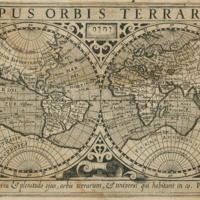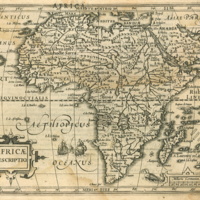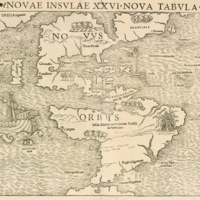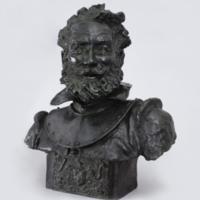The Americas
Beginnings to 1607

The study of American history begins more than 30,000 years ago with the arrival of the first peoples on the continent. Ancient societies existed in both North and South America, and would interact differently with European colonial powers. While the Vikings forayed onto American soil first, it was the late 15th century Columbian voyages that truly set the stage for the clash of cultures. These conquistadors were met with native populations undergoing their own changes and growth, which would be drastically altered by the arrival of more and more Europeans. The previous years of economic growth, scientific innovation, and religious conflict led to an increase in global exploration, the development of colonial systems in the Americas, and the introduction of enslaved Africans to both continents.
Indigenous peoples were displaced, often by force, as Europeans colonized the continent. Europe developed the first trans-oceanic empires, a system that would continue far past the American Revolution. Economic and commercial growth increased with the introduction of new natural resources and new labor forces. While Western Europe moved away from the idea of slavery and serfdom, these ideas had already taken hold in the American South.
Learn more in the National U.S. History Content Standards.
Recently added items
Africae Descriptio, Map, 1607
Gerard Mercator (1512–1594) was born in Flanders, now known as Belgium. The son of a shoemaker, he graduated in 1532 from the University of Louvain, where he studied astronomy, geography, and mathematics. Afterwards he worked as a calligrapher,…
Sebastian Münster, Early Map of North and South America, 1545
Sebastian Münster (1488–1552) was a German cartographer, cosmographer, and scholar. In 1544, he published Cosmographia, the earliest description of the world written in German, although editions were also published in English, French, Italian, and…
Map of the Americas, 1596
Theodore de Bry (1528–1598) was born in Liege, Flanders (now part of the Netherlands), to a wealthy Protestant family and was trained as a goldsmith and engraver. As the Spanish and British began to explore North and South America, de Bry became…
John Smith, Bust, circa 1905
In 1906, Robert Baden-Powell presented this bust of John Smith to the Commonwealth of Virginia. Although best known as the founder of the Boy Scout movement, Baden-Powell was also an artist of considerable skill. The family of Baden-Powell's mother…




